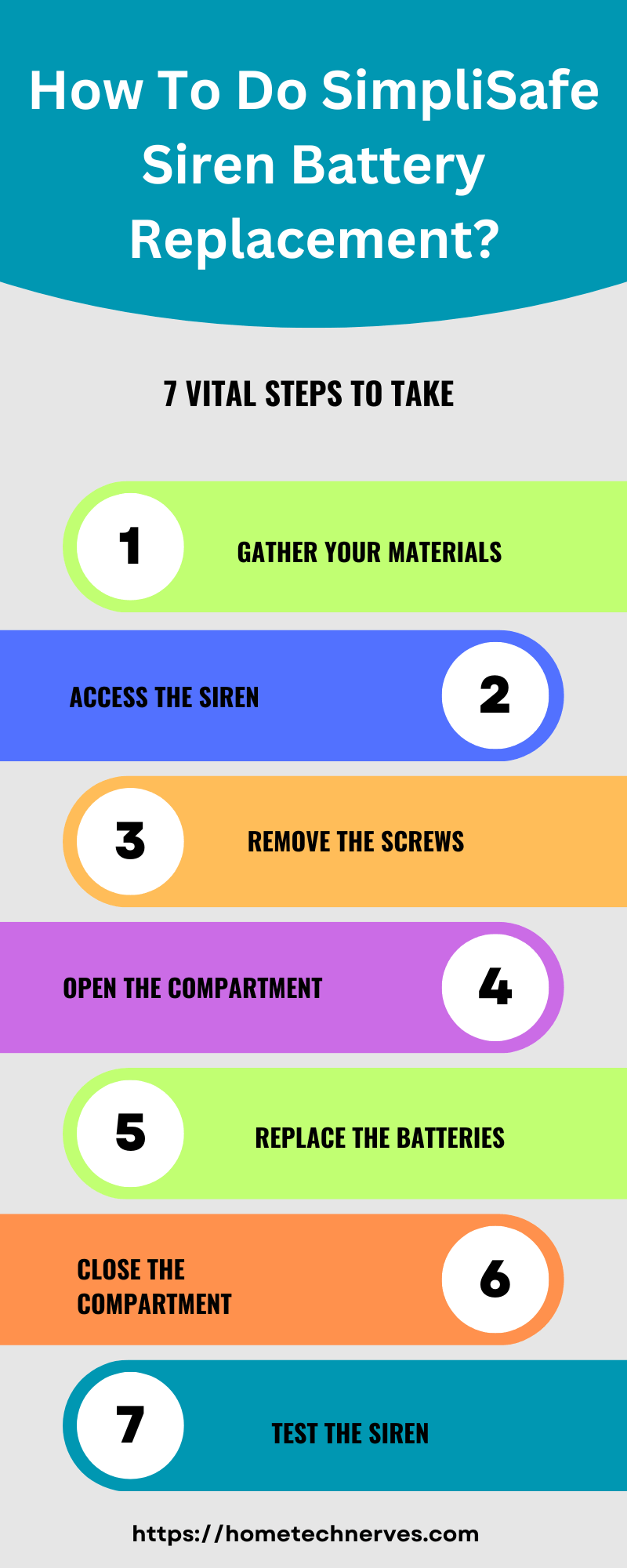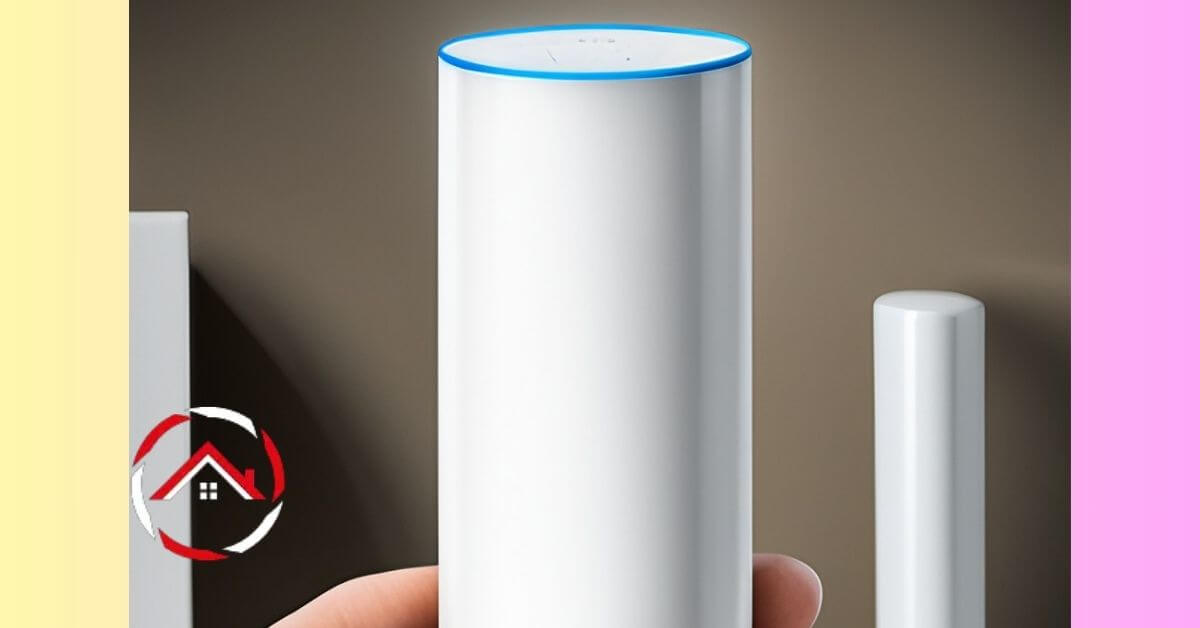SimpliSafe’s motion sensors are a crucial component of their home security system, providing reliable detection of intruders and enhancing overall safety.
To ensure these devices function optimally, it’s essential to understand the battery replacement process. This simple yet critical task provides uninterrupted protection for your home and loved ones.
This guide will walk you through the straightforward steps of replacing the batteries in your SimpliSafe motion sensor.
With the proper knowledge and a few minutes of your time, you can maintain the effectiveness of your security system and enjoy peace of mind knowing your home is well-protected.
Read more: Review of SimpliSafe Home Security System
Table of Contents
Reasons to Do SimpliSafe Motion Sensor Battery Replacement
Maintaining the functionality of your SimpliSafe motion sensors through regular battery replacement is essential to ensure your home security system continues to provide robust protection.
Neglecting this simple yet crucial task can compromise your security. This guide explores why you should prioritize SimpliSafe motion sensor battery replacement to keep your home and loved ones safe.
1. Sustained Reliability:
With age, batteries tend to lose their power capacity. Regular battery replacement ensures that your motion sensors remain reliable and responsive. Replacing batteries before they run out prevents false alarms and allows your security system to detect genuine threats without fail.
2. Uninterrupted Protection:
Your home security system is only as effective as its weakest link. Neglecting battery replacement can lead to a malfunctioning motion sensor, leaving vulnerabilities in your security coverage. Timely replacements guarantee uninterrupted protection, providing peace of mind 24/7.
3. Enhanced Home Security:
Effective motion sensors are the first line of defense against potential intruders. Regular battery replacement ensures these sensors can quickly detect and alert you to suspicious activity, giving you a crucial edge in protecting your home and valuables.
4. Cost-Efficiency:
While it may seem minor, failing to replace batteries on time can lead to more significant costs. Unanticipated sensor failures can result in emergency service calls or, in worst-case scenarios, property damage. Prevent these unexpected expenses by adhering to a regular battery replacement schedule.
5. Extended Sensor Lifespan:
Motion sensors are an investment in your home’s security. Proper maintenance, including battery replacement, can extend the lifespan of these devices, saving you money in the long run. When motion sensors are well-maintained, they serve as a reliable and enduring part of your overall security system.
By recognizing the importance of SimpliSafe motion sensor battery replacement and implementing a proactive approach, you can ensure that your home security system remains robust and effective.
Regular maintenance not only safeguards your property but also provides you with the peace of mind that your loved ones are protected around the clock.
What Is the Simplisafe Motion Sensor Battery Type?
SimpliSafe typically uses lithium batteries for their motion sensors. Specifically, they commonly use CR123A lithium batteries for these devices. However, it’s important to note that manufacturers may update their product specifications or use different battery types in newer models.
To ensure that you use the correct battery type for your SimpliSafe motion sensor, I recommend checking the user manual or contacting SimpliSafe’s customer support for the most up-to-date information on battery requirements for your specific sensor model, as product specifications can change over time.
What Are Simplisafe Motion Sensor Problems?
While SimpliSafe motion sensors are designed to enhance home security, like any electronic device, they can encounter issues that may affect their performance. Understanding common problems associated with SimpliSafe motion sensors can help you troubleshoot and maintain the integrity of your security system.
Common SimpliSafe Motion Sensor Problems:
- False Alarms: Occasional false alarms triggered by pets, environmental factors, or sensor placement can be a common issue.
- Battery Drain: Motion sensors may experience rapid battery depletion, potentially leading to device malfunctions.
- Signal Interference: Radio frequency interference or obstructions can disrupt sensor and base station communication.
- Limited Range: Some motion sensors may have a limited detection range, impacting their effectiveness in larger spaces.
- Sensor Positioning: Incorrect sensor placement, such as facing windows or heat sources, can lead to unreliable detection.
- Inadequate Calibration: Improper calibration or sensitivity settings may cause the sensor to miss or overreact to movement.
- Environmental Factors: Extreme temperatures, humidity, or dust can affect sensor performance over time.
- Sensor Tampering: Unauthorized or physical damage to the sensor can impair its functionality.
- Outdated Firmware: Neglecting updates may result in compatibility issues or security vulnerabilities.
- Base Station Connectivity: Problems with the base station can disrupt communication with motion sensors.
- Low Battery Alerts: Ignoring standard battery warnings can lead to sensor failure during critical moments.
- Sensor Compatibility: Ensuring compatibility with your SimpliSafe system is crucial to avoid functionality issues.
Remember that addressing these issues promptly, following manufacturer guidelines, and seeking assistance from SimpliSafe’s customer support when necessary can help maintain the effectiveness of your motion sensors and overall home security system.
What Is SimpliSafe Motion Sensor Battery Life?
The SimpliSafe motion sensor battery life typically varied depending on several factors, including sensor usage, environmental conditions, and the type of batteries used. SimpliSafe often used CR123A lithium batteries for their motion sensors.
On average, these CR123A lithium batteries could last anywhere from 1 to 2 years in SimpliSafe motion sensors with regular use. However, it’s important to note that individual battery life may vary based on how often the sensor is triggered and how frequently it communicates with the base station.
To determine the exact battery life for your SimpliSafe motion sensor, I recommend checking the user manual or contacting SimpliSafe’s customer support.
How to Do SimpliSafe Siren Battery Replacement?
The SimpliSafe siren is pivotal in alerting you and deterring potential intruders in case of a security breach. To ensure it operates reliably, it’s essential to replace its batteries periodically. Here’s a straightforward guide on replacing the SimpliSafe siren battery, ensuring your home security remains robust.
SimpliSafe Siren Battery Replacement Steps:
- Gather Materials: Prepare fresh batteries of the appropriate type and a screwdriver for opening the siren cover.
- Locate the Siren: Identify the SimpliSafe siren unit, typically placed near the base station or entry points.
- Power Off the Siren: Disable the siren by accessing your SimpliSafe system through the keypad or mobile app.
- Remove the Cover: Use a screwdriver to carefully open the siren’s cover, exposing the old batteries.
- Replace Batteries: Remove the old batteries and insert the new ones, ensuring proper polarity alignment.
- Test the Siren: Reattach the cover and power on the siren. Test it to ensure the new batteries have restored functionality.
- Reconnect to the System: Reconnect the siren to your SimpliSafe system and follow any necessary steps to ensure it communicates appropriately.
- Monitor Battery Life: Regularly monitor the siren’s battery status through the SimpliSafe app or system keypad and replace batteries to maintain optimal performance.
- Dispose of Old Batteries: Properly dispose of the old batteries according to local regulations and recycling guidelines.
By following these steps, you can quickly and effectively replace the batteries in your SimpliSafe siren, ensuring that your home security remains dependable and ready to protect your property.

How to Fix Simplisafe Motion Sensor Offline?
A SimpliSafe motion sensor going offline can disrupt your home security system’s effectiveness. Fortunately, resolving this issue is often straightforward. Here are steps to help you troubleshoot and fix an offline SimpliSafe motion sensor.
Steps to Fix SimpliSafe Motion Sensor Offline:
- Check Sensor Placement: Ensure the motion sensor is positioned within the recommended range of the base station and is not obstructed by large objects or obstacles.
- Battery Status: Verify that the sensor has fresh batteries with sufficient power, as low battery levels can cause offline issues.
- Reboot the Base Station: Power cycle the SimpliSafe base station by unplugging it, waiting 30 seconds, and then plugging it back in.
- Check Wi-Fi Connection: Ensure that your SimpliSafe system has a stable internet connection, as a loss of connection can cause sensors to go offline.
- Sensor Tampering: Inspect the sensor for any physical damage or tampering and make sure it’s securely mounted.
- Reconnect the Sensor: In the SimpliSafe app or using the keypad, attempt to reconnect the sensor to the system. Follow the on-screen instructions.
- Update Firmware: Ensure that your SimpliSafe system and sensors install the latest firmware updates to prevent compatibility issues.
- Contact Customer Support: If the sensor remains offline despite troubleshooting, contact SimpliSafe’s customer support for further assistance and guidance.
By following these steps, you can address common issues that may cause a SimpliSafe motion sensor to go offline, ensuring that your home security system operates effectively and provides the protection you rely on.
Frequently Asked Questions
How often do I need to replace the batteries in my SimpliSafe Motion Sensor?
SimpliSafe recommends replacing the batteries in your Motion Sensor approximately once every 2-3 years. However, the actual battery life may vary based on usage and environmental factors.
How can I check the battery status of my SimpliSafe Motion Sensor?
You can check the battery status of your Motion Sensor through the SimpliSafe app. Navigate to the device settings, and you should find information about the battery level. Additionally, the system will provide low-battery notifications when it’s time for a replacement.
What type of batteries does the SimpliSafe Motion Sensor use?
The SimpliSafe Motion Sensor typically uses CR123A lithium batteries. Ensure you replace the old batteries with the same type for optimal performance. These batteries are widely available and can be purchased from various retailers.
Can I replace the batteries in my SimpliSafe Motion Sensor myself, or do I need professional assistance?
You can easily replace the batteries in your SimpliSafe Motion Sensor yourself. Simply follow the instructions provided in the user manual or on the SimpliSafe website. It’s a straightforward process that doesn’t require professional assistance, allowing you to maintain your home security system with ease.
Wrap Up
SimpliSafe motion sensor battery replacement is a fundamental aspect of maintaining the integrity and reliability of your home security system.
By staying proactive and adhering to a regular battery replacement schedule, you can ensure that your motion sensors continue to operate at their peak performance.
This proactive approach not only prevents false alarms and interruptions in protection but also extends the lifespan of your sensors, saving you both time and money in the long run.
So, whether safeguarding your loved ones or protecting your valuable assets, taking a few minutes to replace those batteries is a simple yet effective step towards maintaining the peace of mind that comes with a well-functioning home security system.
Related Posts
- Guide on the SimpliSafe Range Extender
- Is SimpliSafe Compatible With Alexa?
- Simplisafe During Power Outage – A Complete Guide
- SimpliSafe Doorbell Battery – A Comprehensive Guide
- How to Set Up SimpliSafe Master Pin?
References:
SimpliSafe Support. How to replace batteries in SimpliSafe Devices. https://support.simplisafe.com/articles/using-your-system/how-to-replace-batteries-in-simplisafe-devices/63447c1beb3c8e382dd025f6



Your article helped me a lot, is there any more related content? Thanks!